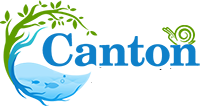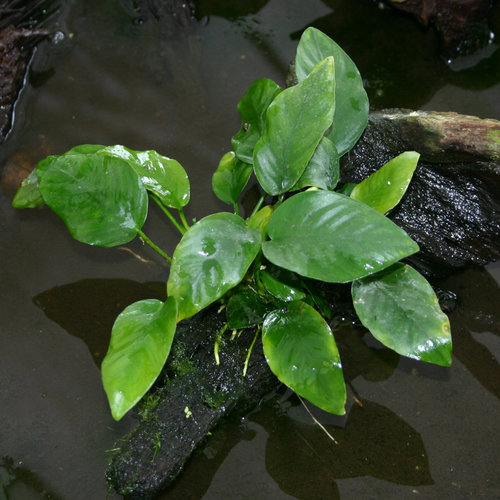Discover the secrets to successfully caring for Anubias Nana with this comprehensive guide. From lighting and water requirements to propagation techniques, learn everything you need to know to keep your Anubias Nana thriving.
Understanding Anubias Nana
Anubias Nana is a popular aquatic plant in the aquarium hobby. It belongs to the family Araceae and is native to West Africa. This plant is known for its dark green, heart-shaped leaves and sturdy, rhizomatous structure. It is a great choice for beginners and experienced aquarists alike due to its low maintenance requirements.
One of the key characteristics of Anubias Nana is its ability to survive in a wide range of water conditions. It can tolerate both soft and hard water, making it adaptable to different aquarium setups. The plant prefers a temperature range of 72-82°F (22-28°C) and a pH level between 6.0 and 7.5.
When it comes to placement, Anubias Nana can be used as a foreground, midground, or even background plant depending on its size. It can be attached to driftwood, rocks, or other aquarium decorations using fishing line or plant-safe glue. This plant is a slow grower, so it doesn't require frequent trimming.
Overall, understanding the basic characteristics and requirements of Anubias Nana is crucial for providing the best care and ensuring its long-term health in your aquarium.
Creating the Ideal Environment
To create the ideal environment for Anubias Nana, it's important to consider factors such as lighting, water parameters, and substrate.
When it comes to lighting, Anubias Nana is considered a low to moderate light plant. It can thrive under both low and moderate intensity aquarium lights. However, it's important to avoid intense lighting as it can lead to algae growth on the leaves. A lighting duration of 8-10 hours per day is usually sufficient.
In terms of water parameters, Anubias Nana prefers slightly acidic to slightly alkaline water. As mentioned earlier, a pH level between 6.0 and 7.5 is ideal. The water temperature should be maintained within the range of 72-82°F (22-28°C). Additionally, it's important to provide good water circulation to prevent stagnation and maintain oxygen levels.
When it comes to substrate, Anubias Nana is a rhizomatous plant that doesn't require planting in the substrate. It can be attached to driftwood, rocks, or other decorations using fishing line or plant-safe glue. However, if you choose to plant it in the substrate, make sure to use a sandy or fine-grained substrate to avoid damaging the delicate roots.
By creating the ideal environment with appropriate lighting, water parameters, and substrate, you can ensure the optimal growth and health of Anubias Nana in your aquarium.
Proper Lighting and Water Conditions
Proper lighting and water conditions are crucial for the growth and well-being of Anubias Nana.
As mentioned earlier, Anubias Nana is a low to moderate light plant. It can thrive under both low and moderate intensity aquarium lights. If you provide too much light, it can lead to the growth of unwanted algae on the leaves. It's recommended to use full-spectrum LED lights or fluorescent lights for optimal growth.
In terms of water conditions, Anubias Nana prefers slightly acidic to slightly alkaline water with a pH level between 6.0 and 7.5. It can tolerate a wide range of water hardness, but it's important to maintain stable water parameters. Fluctuations in pH or hardness can stress the plant and affect its overall health.
Regular water changes are important to maintain water quality and prevent the buildup of toxins. Aim for weekly water changes of 10-20% to keep the water parameters stable and provide fresh nutrients for the plant.
By providing proper lighting and maintaining stable water conditions, you can ensure the healthy growth and vibrant appearance of Anubias Nana in your aquarium.
Feeding and Fertilization
Feeding and fertilization play an important role in the growth and nutrient uptake of Anubias Nana.
Anubias Nana is a slow-growing plant that doesn't have high nutrient requirements. In most cases, it can derive sufficient nutrients from the water and substrate. However, supplementing with liquid or root fertilizers can promote healthier growth and vibrant foliage.
When choosing a fertilizer, look for one specifically formulated for aquarium plants. Follow the instructions provided by the manufacturer for dosing and frequency. It's important not to overdose the fertilizer, as it can lead to algae growth and harm the plant.
In addition to fertilization, Anubias Nana benefits from organic matter in the aquarium. This can be achieved by adding dried leaves, such as Indian Almond leaves, or by incorporating natural plant-based supplements.
By providing appropriate feeding and fertilization, you can enhance the growth and overall appearance of Anubias Nana in your aquarium.
Propagation Techniques
Propagating Anubias Nana is relatively easy and can be done through division or rhizome cuttings.
To propagate through division, carefully separate the plant into smaller portions, making sure each portion has at least a few leaves and a portion of the rhizome. Plant the divided portions in the desired locations, either attached to decorations or planted in the substrate.
Rhizome cuttings can be taken by cutting a portion of the rhizome with a sharp, sterile knife. Make sure each cutting has at least a few leaves and a portion of the rhizome. The cuttings can be attached to decorations or planted in the substrate using fishing line or plant-safe glue.
After propagation, it's important to provide the same care and environment as the parent plant. The new plants may take some time to establish and start growing, but with proper care, they will thrive and contribute to the overall beauty of your aquarium.
By utilizing these propagation techniques, you can expand your collection of Anubias Nana and create a lush and vibrant aquascape.
Additional Resources:
live aquarium plants | Ultimate Guide To Live Aquarium Plants
Unveiling The Truth: Cyrptocoryne Plants
Exploring The Beauty Of Dwarf Sagittaria
Planting Live Aquarium Plants - How To Guide
Anubias Barteri Nana | A Beginners Guide






Leave a Comment